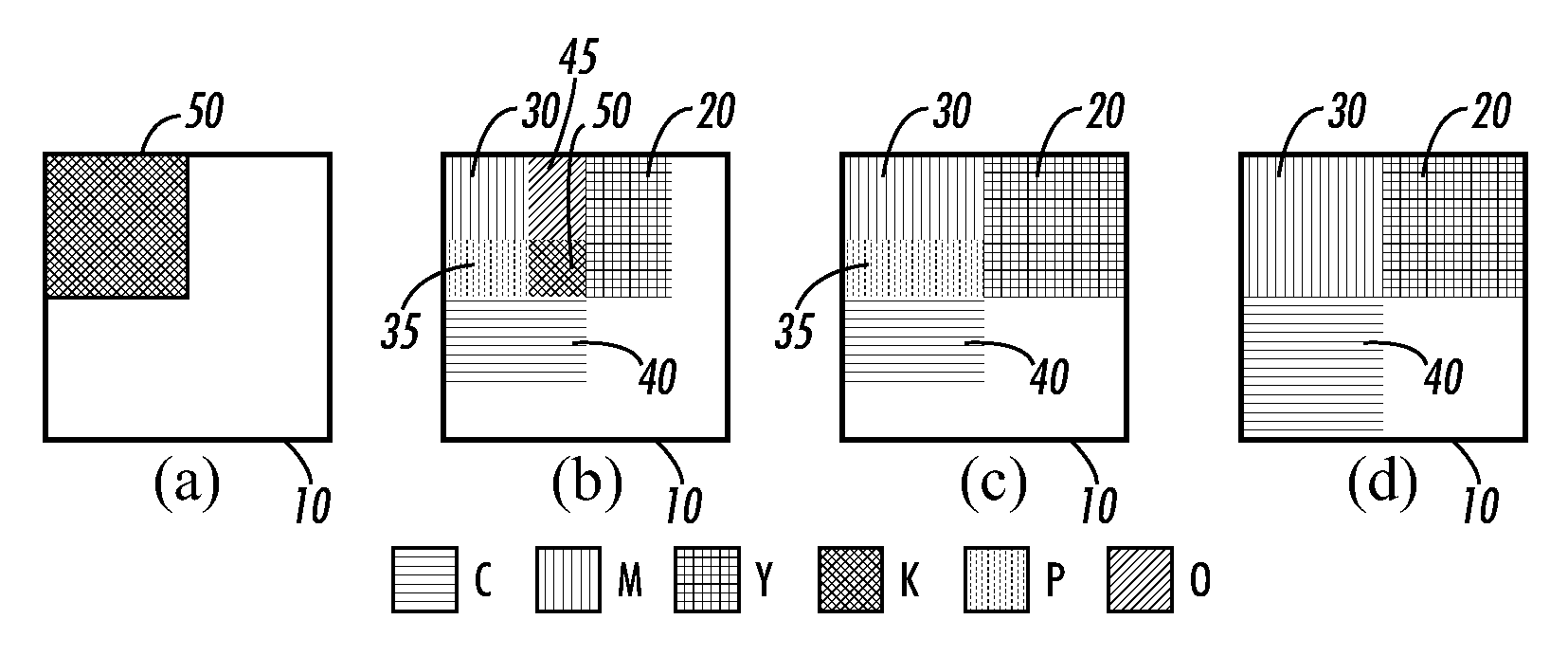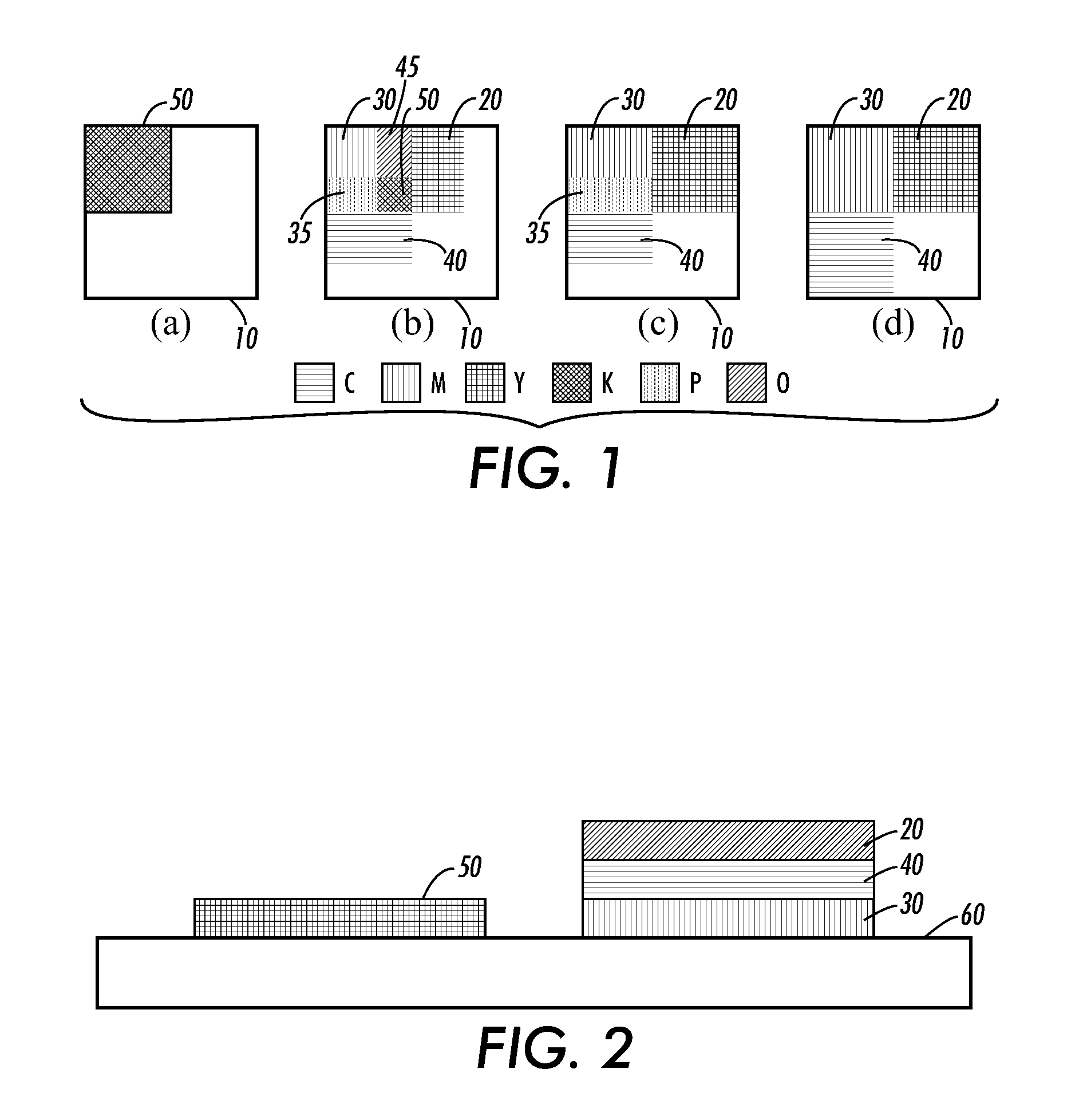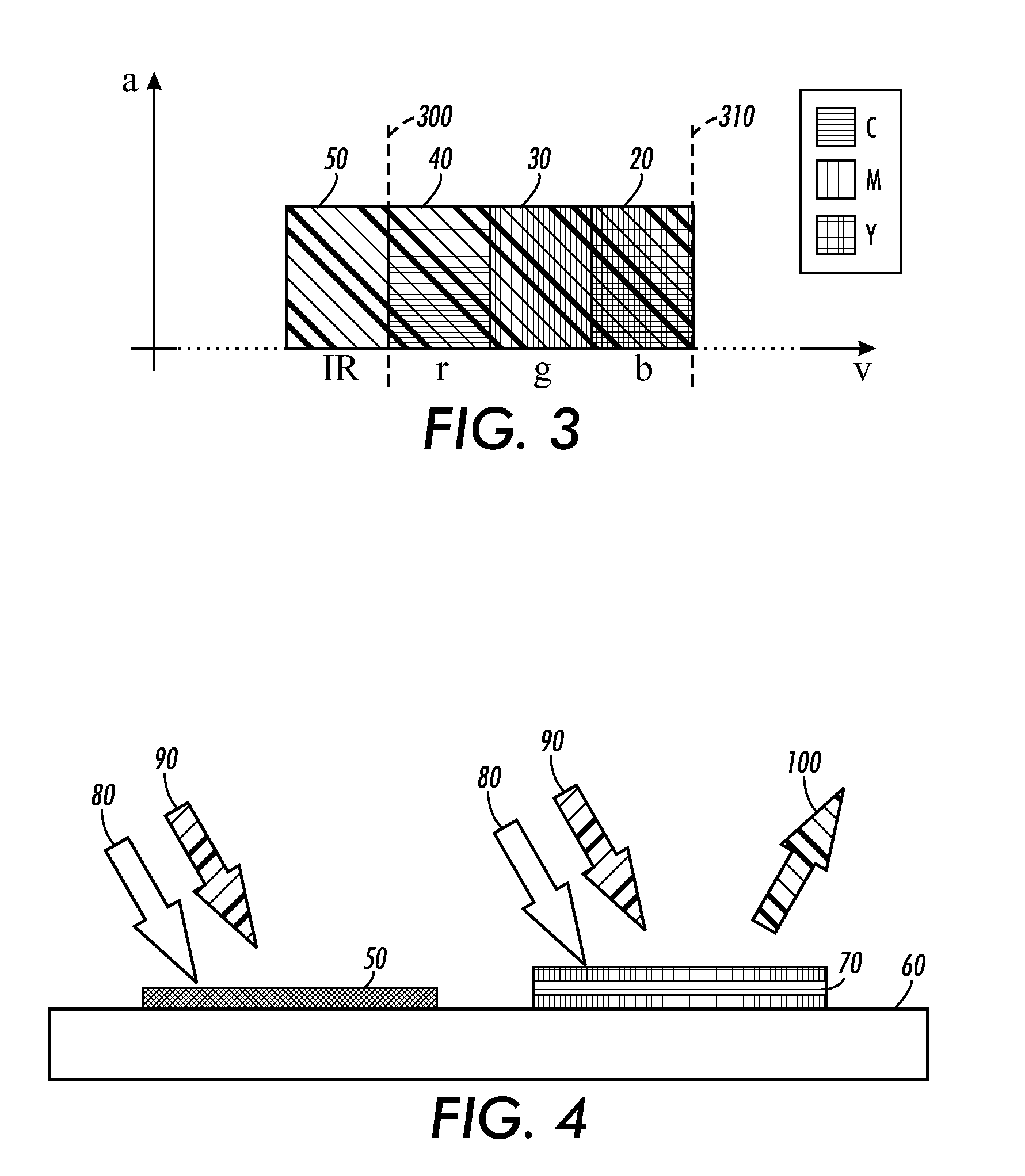Infrared encoding of security elements using standard xerographic materials with distraction patterns
a technology of xerographic materials and infrared encoding, which is applied in the direction of photosensitive materials, instruments, electrographic processes, etc., can solve the problems of variable data printing arrangement, special inks and materials are often difficult to incorporate into electro-photographic or other non-impact printing systems, etc., and achieve minimal system overhead requirements and storage requirements.
- Summary
- Abstract
- Description
- Claims
- Application Information
AI Technical Summary
Benefits of technology
Problems solved by technology
Method used
Image
Examples
Embodiment Construction
[0022]For a general understanding of the present disclosure, reference is made to the drawings. In the drawings, like reference numerals have been used throughout to designate identical elements. In describing the present disclosure, the following term(s) have been used in the description.
[0023]The term “data” refers herein to physical signals that indicate or include information. An “image”, as a pattern of physical light or a collection of data representing said physical light, may include characters, words, and text as well as other features such as graphics. A “digital image” is by extension an image represented by a collection of digital data. An image may be divided into “segments,” each of which is itself an image. A segment of an image may be of any size up to and including the whole image. The term “image object” or “object” as used herein is believed to be considered in the art generally equivalent to the term “segment” and will be employed herein interchangeably. In the e...
PUM
| Property | Measurement | Unit |
|---|---|---|
| spatial frequency | aaaaa | aaaaa |
| color | aaaaa | aaaaa |
| grayscale value | aaaaa | aaaaa |
Abstract
Description
Claims
Application Information
 Login to View More
Login to View More - R&D
- Intellectual Property
- Life Sciences
- Materials
- Tech Scout
- Unparalleled Data Quality
- Higher Quality Content
- 60% Fewer Hallucinations
Browse by: Latest US Patents, China's latest patents, Technical Efficacy Thesaurus, Application Domain, Technology Topic, Popular Technical Reports.
© 2025 PatSnap. All rights reserved.Legal|Privacy policy|Modern Slavery Act Transparency Statement|Sitemap|About US| Contact US: help@patsnap.com



